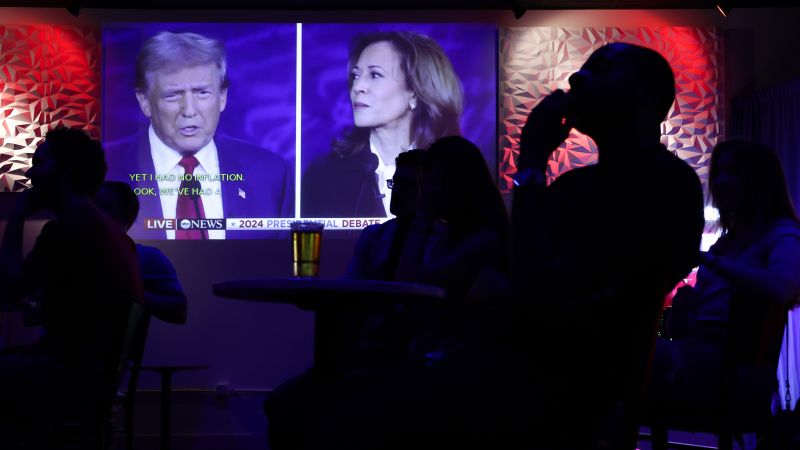The first presidential debate between Vice President Kamala Harris and former President Donald Trump attracted an estimated 67.1 million viewers across 17 television networks, according to Nielsen data. This debate, held in Philadelphia and hosted by ABC News, outperformed the June debate between Trump and President Joe Biden, which drew in 51 million viewers. However, the total audience for this debate was lower than previous years, with over 73 million tuning in for the first 2020 debate between Trump and Biden, and a record-breaking 84 million viewers for the first debate between Hillary Clinton and Trump in 2016.
Viewership habits have changed significantly since 2016, with the rise of streaming and social media platforms impacting traditional television ratings. Nielsen data does not take into account viewers who watched the debate through digital platforms, indicating that while fewer Americans watched on television, there were likely millions more who watched online. This shift highlights the importance of reaching audiences across multiple platforms to engage a wider range of viewers.
ABC, the network that hosted the debate, attracted the most viewers with over 19 million tuning in. NBC followed with more than 10 million viewers, and Fox News drew in over 9 million. These numbers indicate the continued importance of traditional television networks in reaching large audiences, but also show the rise of cable news networks in broadcasting political events. The diversity of viewership across networks suggests that different audiences may have different preferences for where they consume political content.
The high viewership for this debate showcases the continued interest in politics and the presidential election, as well as the influence of the candidates involved. The clash between Harris and Trump drew in a large audience, with viewers eager to see how the candidates would engage with each other on key issues. The presidential debates serve as a significant moment in the election cycle, allowing voters to hear directly from the candidates and evaluate their positions and demeanor.
As technology continues to evolve, the way audiences consume political content will likely shift as well. Streaming platforms and social media are increasingly important in reaching younger and more digitally savvy viewers. The ability to reach audiences across multiple platforms will be crucial in future election cycles to ensure that candidates can connect with a diverse range of voters. The changing landscape of media consumption will impact how debates are aired and promoted, requiring candidates and networks to adapt to new trends in order to engage with voters effectively.


